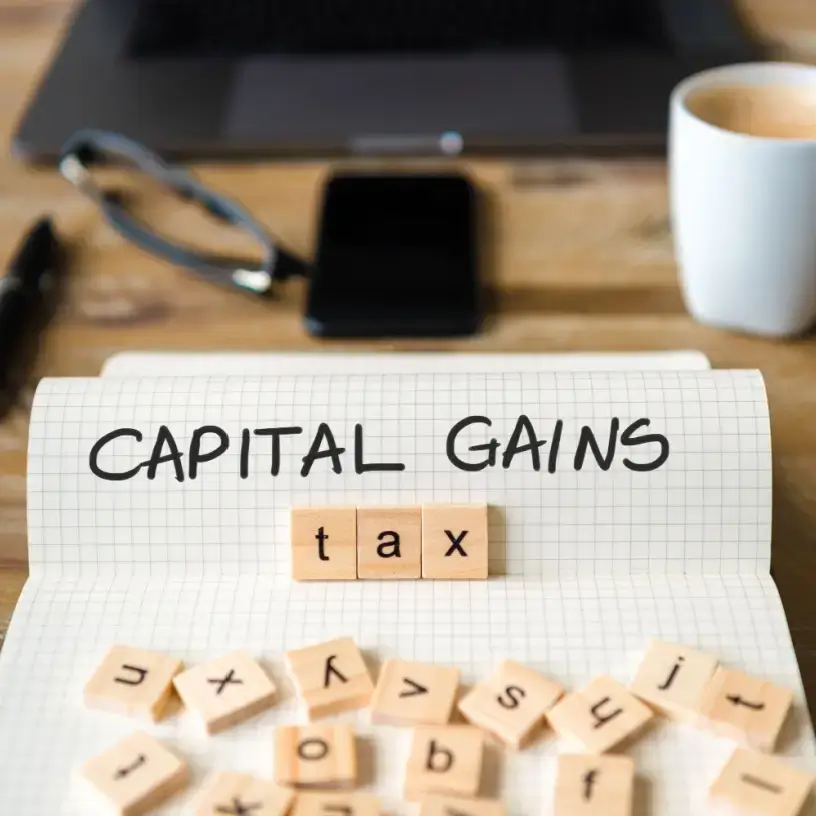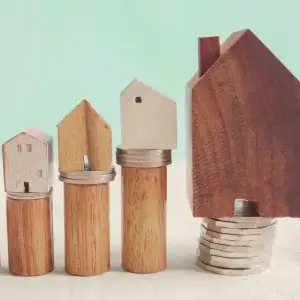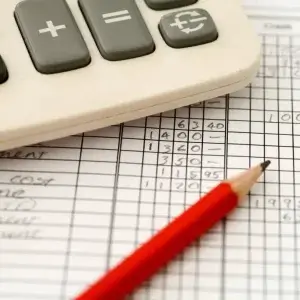Home / Home Loans / Understanding capital ga…

Key takeaways
- Capital gains tax, or CGT for short, is a tax paid on the sale of significant assets like real estate or cars
- You may not have to pay CGT on the sale of a property depending on what it was used for
- If you are required to pay CGT, there are several ways to calculate your tax payable so you may want to enlist the services of an accountant
Capital gains tax explained
What is capital gains tax?

Capital gains tax, or CGT for short, is a government tax levied on profits made from the sale of certain pieces of private property known as capital assets, such as real estate. The sale of such an asset is known as a CGT event.
Any profit you make as the result of a CGT event is referred to as a capital gain, and a loss resulting from a CGT event is known as a capital loss. Before a capital gain or loss is determined, the money you received as a result of the sale is known as your capital proceeds.
Luckily for the humble taxpayer, capital gains tax is treated as part of your assessable income for the year, meaning you will need to report any capital gains or losses as part of your annual income tax return, rather than pay it separately.¹
Do you need to pay capital gains tax on property sales?
Property and real estate are considered subject to CGT and will typically trigger a CGT event if sold. However, there are a handful of exceptions and exemptions which mean plenty of Australians sell their home without having to pay tax on the subsequent capital proceeds.
This is because the Australian Taxation Office offers something called the main residence exemption, a CGT exemption which applies if you’re an Australian resident and the property you’re selling:
- Has been your home for the entire time you’ve owned it
- Was not used at any point to produce income – meaning you didn’t run a business out of it, rent it out, or buy it to renovate and sell for a quick profit
- Is on two hectares of land or less
This means if you’re selling an investment property, the profits will be subject to CGT. This is true even if you used the property for personal use at some point – if it was ever a rental property being used to produce income, its sale will be a CGT event.²
The cost of an asset vs its cost base
For matters of CGT, an asset’s purchase price or market value is less relevant than its cost base (i.e. the asset’s sale price plus any costs you incurred acquiring, holding, or disposing of it).
In a property context, this could mean home insurance premiums, council rates, land tax, repairs, etc. The sum of these costs over the period of time you owned the asset would determine your asset’s final cost base, which forms a large part of most CGT calculations.
How capital gains tax is calculated

To calculate your capital gains tax burden for the year, you can simply figure out the sum of your capital gains and losses over the financial year and determine your total capital gain or loss. However, there are some other factors and calculation methods you may want to take into consideration, as they could help reduce your capital gain and subsequently the tax payable on it.
The ATO outlines three methods for calculating a capital gain. You’re allowed to choose the method that provides the smallest capital gain – which may reduce your payable tax.
Discount method
If you owned the asset in question for at least 12 months before selling it and you’re an Australian resident for tax purposes, you can get a CGT discount of 50% off your net capital gain, or 33.33% if you owned the asset through a self-managed superannuation fund (SMSF).³
Foreign residents and Australian residents with a period of overseas residency are not eligible for the full discount.
Indexation method
If you acquired the asset before 21 September 1999, you can choose to index its cost base for inflation up to 30 September 1999 – meaning its original cost will be considered higher relative to the price you eventually sell the asset for.
This in turn means the difference between the two prices will be smaller, and you’ll make a smaller taxable capital gain after selling the asset in question.⁴
‘Other’ or ‘basic’ method
If you’re not eligible to utilise either of the two methods above, you’ll need to calculate the difference between the asset’s cost base and the capital proceeds it generated when sold.⁵
How capital losses are calculated
When calculating capital losses, keep your reduced cost base in mind. This means not just looking at the purchase price of an asset, but how much it cost you to acquire, maintain, and sell.
If you sell a property for less than you bought it, you may not make a capital loss if the asset’s reduced cost base is low enough. According to the ATO, when calculating an asset’s reduced cost base, you’ll need to find the sum of the value of:
- What you paid for the property
- Any costs of purchasing the property (e.g. conveyancing costs, legal fees, etc)
- Certain expenses you incurred in the course of maintaining the property’s value, typically through maintenance and/or repairs
- Any costs arising from a need to preserve or defend your ownership of the asset and its title
Once you have your reduced cost base, you can subtract it from your capital proceeds to figure out whether you’ve made a capital loss or not.⁶
What rate is capital gains tax charged at?
Capital gains tax is treated as part of your regular income tax, so any capital gains you make will be taxed at your marginal tax rate for the relevant financial year.¹
This means there are no standalone or separate tax rates for capital gains tax; you will need to refer to the current tax law to determine the income tax rate at which your capital gains and taxable income will be assessed.
Are inherited properties subject to CGT?
Inherited properties are treated similarly to any other property for the purposes of CGT. If you sell an inherited property that you used as your main residence, you may be eligible for the main residence exemption.
If the inherited property was used to produce income, however, you may have to pay CGT on the capital proceeds resulting from its sale.⁷
Will I pay CGT if I sell my home due to divorce?
If you and your partner own a family home together but ownership of the property is formally transferred to a single party due to divorce or relationship breakdown, you may be able to defer paying CGT on said transferral (which would usually be treated as a CGT event).
To be eligible for such a deferral, the transfer of ownership must occur under a court order or other formal agreement.⁸
After the transferral of ownership, CGT will apply once the property is sold or otherwise transferred again. However, when calculating the applicable CGT you’ll work it out based on the point it was initially acquired, not the point at which it was transferred solely to you.⁹
Meet our home loans expert, Stephen Zeller
Stephen has more than 30 years of experience in the financial services industry and holds a Certificate IV in Finance and Mortgage Broking. He’s also a member of both the Australian and New Zealand Institute of Insurance and Finance (ANZIIF) and the Mortgage and Finance Association of Australia (MFAA).
Stephen leads our team of Mortgage Brokers, and reviews and contributes to Compare the Market’s banking-related content to ensure it’s as helpful and empowering as possible for our readers.
- Australian Taxation Office. What is capital gains tax? Accessed January 2024.
- Australian Taxation Office. Eligibility for main residence exemption. Accessed January 2024.
- Australian Taxation Office. Guide to capital gains tax 2022 – The discount method. Accessed January 2024.
- Australian Taxation Office. Guide to capital gains tax 2022 – The indexation method. Accessed January 2024.
- Australian Taxation Office. Guide to capital gains tax 2022 – The ‘other’ method. Accessed January 2024.
- Australian Taxation Office. Guide to capital gains tax 2022 – What is the reduced cost base? Accessed January 2024.
- Australian Taxation Office. Inherited property and CGT. Accessed January 2024.
- Australian Taxation Office. When the relationship breakdown rollover applies. Accessed January 2024.
- Australian Taxation Office. Calculating CGT on a rollover asset. Accessed January 2024.



